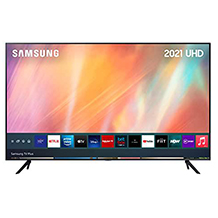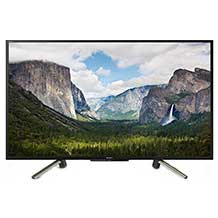Smart TV purchasing advice: how to choose the right product
- The most important facts in brief
- A Smart TV combines the functions of a modern television set with those of an Internet-enabled computer. Streaming, video telephony, online games and surfing are possible without additional devices.
- Smart TVs analyse the preferences of the user and suggest individually suitable programmes.
- An Internet-capable TV is only a Smart TV if it has HbbTV functionality.
- When selecting a suitable smart TV, the screen is the most important factor to consider: Diagonal, resolution, technology, contrast and refresh rate are decisive.
Smart TV: Simply watching TV was yesterday
What do we like to do most in our free time in this country? Is it the children or the partner with whom we spend quality time, is it the weekend visit to friends and relatives or the sports club and the gym to work out at the end of the day? Far from it. Face-to-face encounters with other people are no longer the trend, according to a representative survey conducted by Freizeit-Monitor in 2018. Instead, leisure activities are increasingly taking place in the digital space. Consumption of media, first and foremost television, radio and the internet, lead the list of the most popular leisure activities by far, together with listening to music and making phone calls.
Study of media use
The Association of Private Media, VAUNET, continuously studies the media use of people living in this country. According to the latest reports on the market analysis from the first quarter of 2019, television, radio and internet are the most used media in Germany. The association cites a study by AGF Videoforschung from October 2018 on the use of moving images by the population over 18 living in Germany.
The devices are becoming ever flatter, larger and with more technical variations, but that’s not all: good old TV is also preparing to make the leap into the internet generation. The age group over 60 in particular still watches conventional TV programmes, but the trend among younger media consumers is towards the use of internet-based services, i.e. media libraries, streaming services and YouTube.
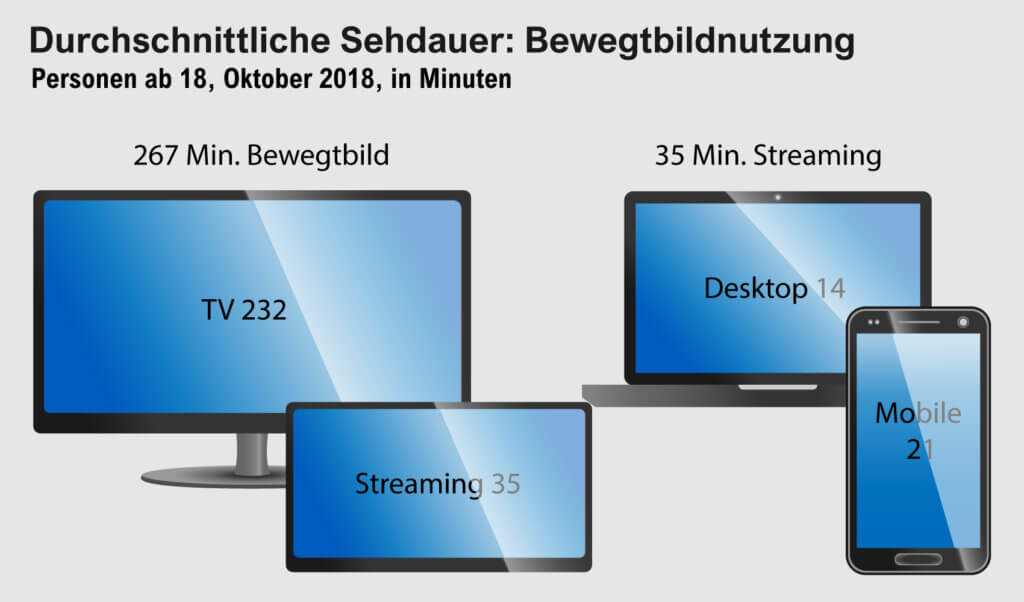
A smart TV is not only the latest generation TV set, but it combines the features of a modern TV with those of a computer. This is why the devices are also called hybrid TVs. The devices have USB connections, WLAN and memory card slots. What distinguishes a smart TV from all the other functions, however, is its HbbTV capability.
HbbTV
The abbreviation HbbTV stands for “Hybrid Broadcast Broadband Television”. HbbTV-capable devices have a decoder for digital television (broadcast) and Internet access (broadband). Internet and television thus merge into one device.
In this respect, a Smart TV is not so much a TV with Internet, but rather a multimedia station that combines numerous functional aspects.
What are the advantages of a Smart TV?
More and more TV viewers, especially younger ones, want to be in control of their TV programmes themselves. They want to decide for themselves what they watch and when. The smart TV offers almost all the relevant channels we use for daily entertainment in a single device: television, streaming, social media.
What possibilities does a Smart TV offer?
Of course, you can do one thing with a Smart TV first: watch TV. However, the additional functions it offers compared to a conventional device are numerous and varied. A survey by the consumer panel GfK of internet users aged 14 and over gives an insight into the aspects that are particularly important to consumers when it comes to internet TV:
- Time-shifted television
- Good picture quality
- Individual programme archives
- Large programme selection
- Electronic TV programme guide
- Online video library
- Interactive participation in voting and quiz programmes
- Language selection for films and videos
- Online games via the TV
However, the term “Smart TV” is not standardised. Some manufacturers already sell an internet-capable TV as a smart TV. The decisive factor, however, is its HbbTV capability, which makes it possible to provide a diverse range of new information and services that users can access via the so-called “Red Button”.
The Red Button – just Teletext 2.0?
By clicking on the Red Button, the viewer is taken to an information page of the broadcaster, on which the broadcaster presents further aspects and content about the current programme.
The potential of networked content and information is enormous: For example, those who follow a football match can conveniently get information on match and player statistics, historical information on past matches between the two teams, betting odds, interviews, access to the fan shop and videos of previous highlights. Those who like to watch series can get background information on actors and the series itself as well as access to fanshops and fan communities in social media at the touch of a button.
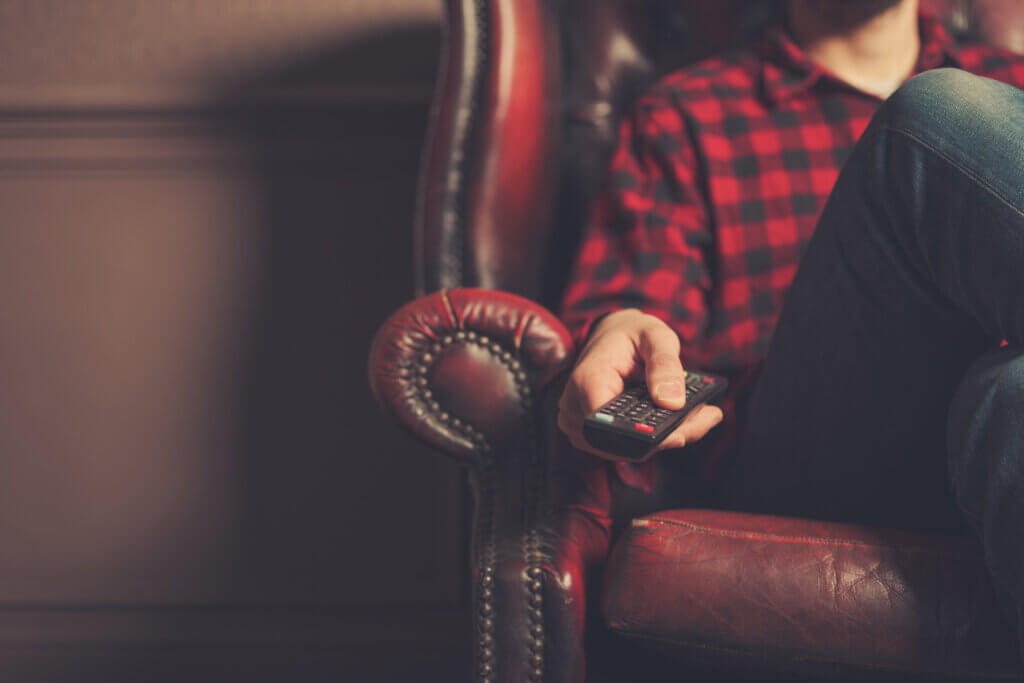
The Red Button in HbbTV opens up the following options for the user:
- Television on demand, for example from broadcasters’ media libraries
- Additional and background information such as news, recipes, weather
- Participation in interactive elements such as viewer voting
- Electronic TV programme guide, visually more appealing, more multimedia and more informative than in teletext
- Access to social networks and the Internet
- Interactive advertising, discount promotions and shopping options
- Interactive games
If the television set has an HbbTV receiver, the service is available to the user free of charge. Thanks to international standardisation, it is distributed worldwide and the content accessible through it can be accessed in different languages from any country in the world.
Applications and apps
With a Smart TV, you can not only watch the usual linear TV programme of the public and private broadcasters, but in parallel, of course, also enjoy all the entertainment benefits that the internet has to offer – with brilliant picture and sound quality. The following is possible in this area with a Smart TV:
- Access to video, music and picture files
- Use of video and streaming platforms such as YouTube, Twitch, Netflix or Amazon
- Access to media libraries and on-demand content
- Retrieval of interactive programme information
- Participation in online games
- Reception of internet radio
- Access social networks via apps or the browser
- Make phone calls via online phone or video call services
Smart functions, smart control, smart home
Smart TVs are equipped with a web browser. To be able to use its possibilities comfortably, a keyboard is an advantage. The devices can therefore be coupled with conventional keyboards via USB connection or via Bluetooth. In this way, the TV with WLAN can be used like a normal PC for surfing the Internet. Some manufacturers even equip their remote controls with small keyboards.
Many models now support voice recognition tools such as Alexa. Using voice control via the integrated microphone, the user can also search for programmes and films, change to another channel or order a pizza online for an evening movie. The manufacturer Samsung, for example, integrates the microphone into the remote control. Alternatively, it is of course also possible to control the smart TV with the manufacturer’s own apps via mobile devices such as smartphones or tablets.
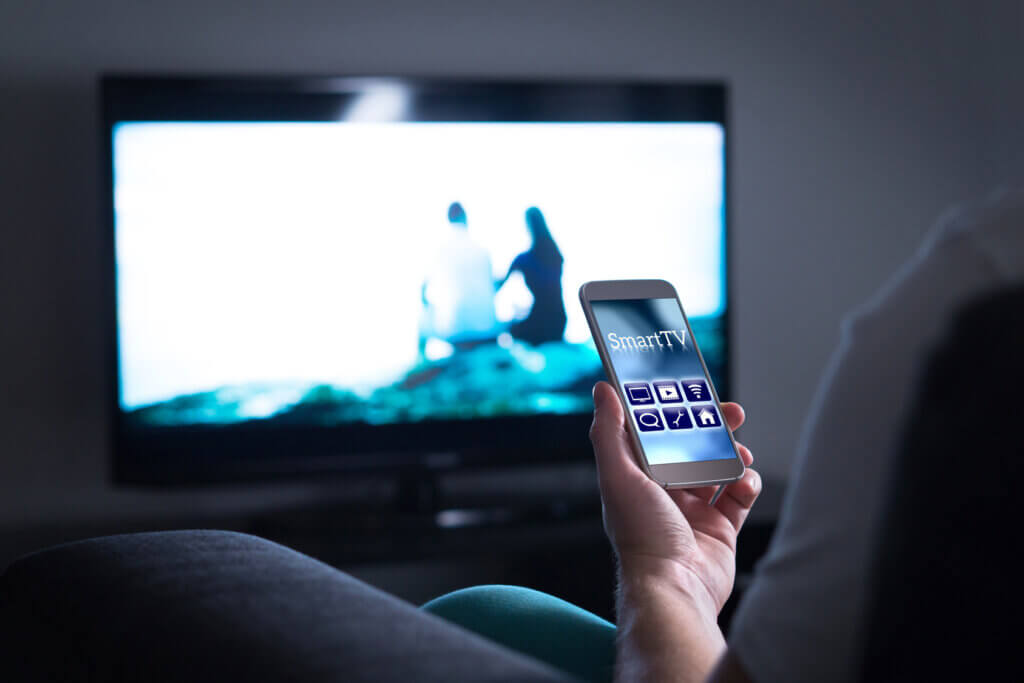
Voice control and the possibility of integrating the Smart TV into a Smart Home environment enable the user to control all the functions of the house and its devices from the couch with their words via the TV. Switching on or dimming the light, activating and viewing the surveillance camera, switching on the alarm system, activating the door opener, directing the hoover robot, lowering the window shutters or regulating the heating temperature – all this is done with just a few words thanks to the integration of the Smart TV with voice recognition function into the Smart Home system. This is a real relief, especially for users with limited mobility or the visually impaired.
Security and personalisation
If the Smart TV has a webcam, the user can secure his or her account with a facial recognition function. On the other hand, the function also serves to personalise the user profile. Thus, a user verified by facial recognition receives programme suggestions individually corresponding to his or her interests and previous viewing habits.
In a family, a smart TV uses the camera to recognise which family member is watching TV and suggests the appropriate programme for mother, father, daughter or son. Access to the personal social media account via the Smart TV is also possible without entering the password thanks to face recognition. A parental lock is a standard feature of Smart TVs. It ensures that children without verified facial recognition or a corresponding password either have no access at all or can only access certain programmes. The user unlocks it again by entering a simple and individually definable key combination.
The master of the programme
Users of a Smart TV decide at any time what they would like to watch and at what time they would like to watch it. A central feature here is the proven and popular timeshift function, which allows the linear TV programme to be paused and playback to be resumed at any later time. The unit records the following programme with interruption of playback, so that the user can also skip annoying commercial breaks, for example, when watching at a later time.
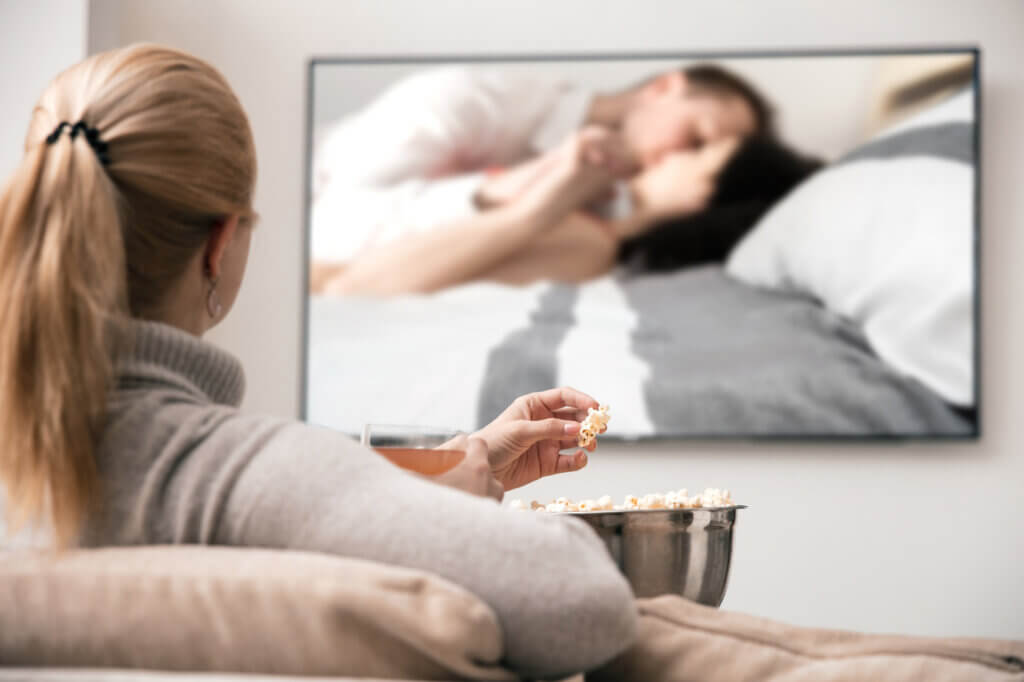
This is made possible on the one hand by the PVR function (“Personal Video Recorder”), where the user can select programmes and have them saved on a USB storage medium, and on the other hand by the IPTV solution, which records programmes in a cloud and keeps them there for playback. Those who have missed a programme completely can usually find it in the broadcaster’s own media libraries for streaming. However, if the programmes of the public and private broadcasters do not appeal to you at all, video-on-demand platforms offer the user an inexhaustible repertoire of content to choose from.
Efficient on reception: What to look for when buying?
What starts with the specifications of the screen continues with the other important features of a smart TV: letter abbreviations, acronyms and superlatives adorn the packaging and product descriptions. All manufacturers entice us with great-sounding terms, but what is behind them and what is actually important in terms of energy consumption, connection sockets, reception options and operating system?
Is energy consumption still an issue?
The energy consumption of a smart TV depends mainly on the screen technology used and the screen size. An LCD/LED set tends to consume more energy than an OLED set, a large TV more than a small one. However, even modern high-quality LCD/LED sets do not have exorbitantly high power requirements. Together with all other household electronic devices, televisions consume only about ten per cent of the electricity in the average household, according to data from the Rhineland-Palatinate Consumer Advice Centre and Öko-Institut e.V..
Energy efficiency class and power consumption
Since 2011, televisions have been required to carry an EU energy label. Since 2017, the range of energy efficiency classes has been from A++ to E, and from 2020 the scale will be shifted to A+++ to D. The smart TVs available on the market currently generally belong to either class A or class A+. However, the specification of the energy efficiency class for TVs refers less to the actual consumption and more to the ratio of the power consumption to the screen size when the device is switched on.
The power consumption in watts on the energy label does not provide much information about the actual power consumption. It refers purely to the power consumption during operation; the power consumption in standby mode, on the other hand, is not included and is not indicated separately on the label.
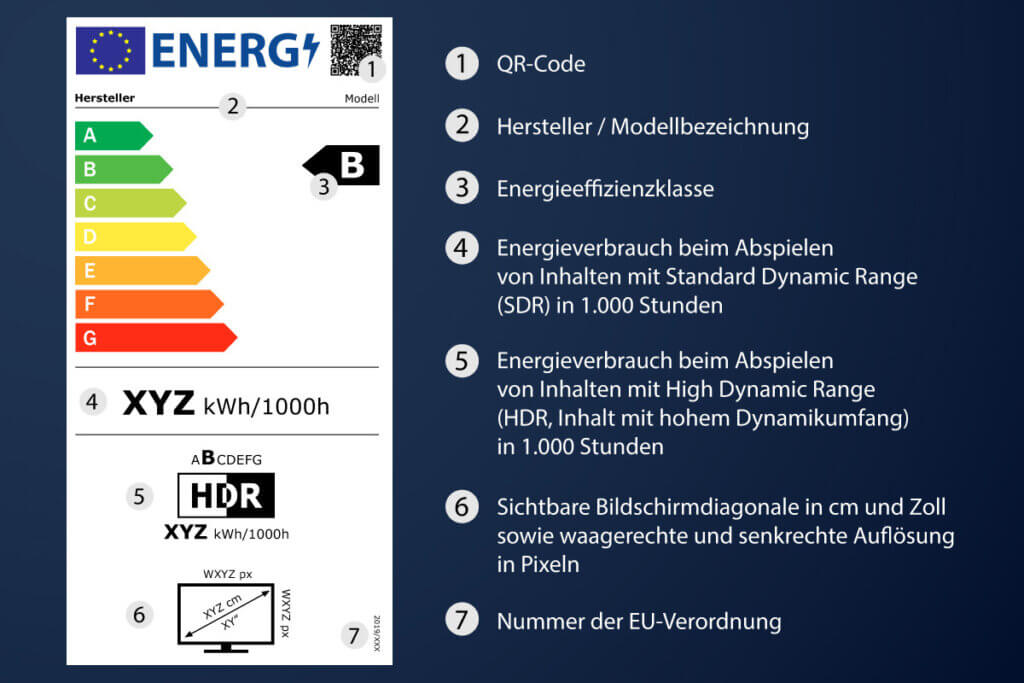
The annual power consumption
More meaningful than the energy efficiency class is the absolute energy consumption per year, which is also indicated on the energy label in the form of kWh/annum (kilowatt hours per year). It should be noted that the indicated annual power consumption refers to a preset screen brightness of 60 per cent with four hours of operation per day.
Saving electricity
If the screen is permanently set brighter than 60 per cent, it consumes significantly more energy. Even the type of content viewed has an influence on power consumption: a film with many dark scenes consumes less power than a film that contains many bright scenes. This difference is especially significant with OLED technology, but this effect evens out anyway with longer use and viewing of different types of content. Standby mode also consumes energy. However, only a minimal current flows through the components of the device in standby, but a sudden maximum voltage when the power is switched on. This could damage the capacitor in the long run. Moreover, frequently switching off and on again is more power-intensive in the long run than the uniformly low power supply in stand-by.
As a rule, power consumption should not be a decisive purchase criterion. If you don’t set the screen too brightly all the time and use the device for two to three hours a day, you will be able to live with the operating costs of only 20 to 50 euros a year. The device should have a real off switch and the user should not be afraid to make use of it.
Connections: How much fits in?
Every Smart TV has a number of different connection sockets that can be used to connect other devices, such as a DVD player or a PlayStation, to the TV set. A Smart TV should always have the following connection options:
- HDMI: Home cinema systems, Blu-Ray players or game consoles can be connected to the set via the HDMI connection. Two connections are the minimum.
- USB: Hard drives and USB sticks can be connected directly to the TV via the corresponding USB ports.
- Bluetooth: Mobile devices such as smartphones or tablets can be connected wirelessly to the TV via Bluetooth, as can computer mice or keyboards.
- WLAN and LAN: A Smart TV can be connected to the Internet either via cable (LAN) or wirelessly via WLAN. LAN connections are more powerful.
- Audio inputs and outputs: Headphones or speakers are to be connected to the TV set via the audio connections.
- CI+ slot: A CI+ slot accommodates a CI+ module, which enables reception of encrypted TV and radio channels.
Set to receive – from Twin to Quattro tuner
There is talk of twin, dual, triple or even quattro tuners in connection with Smart TVs. But what is behind these terms? The tuner is responsible for receiving television signals in digital quality and in high definition. The signals are transmitted via different variants and forms of Digital Video Broadcasting (DVB), the digital video transmission.
DVB-T
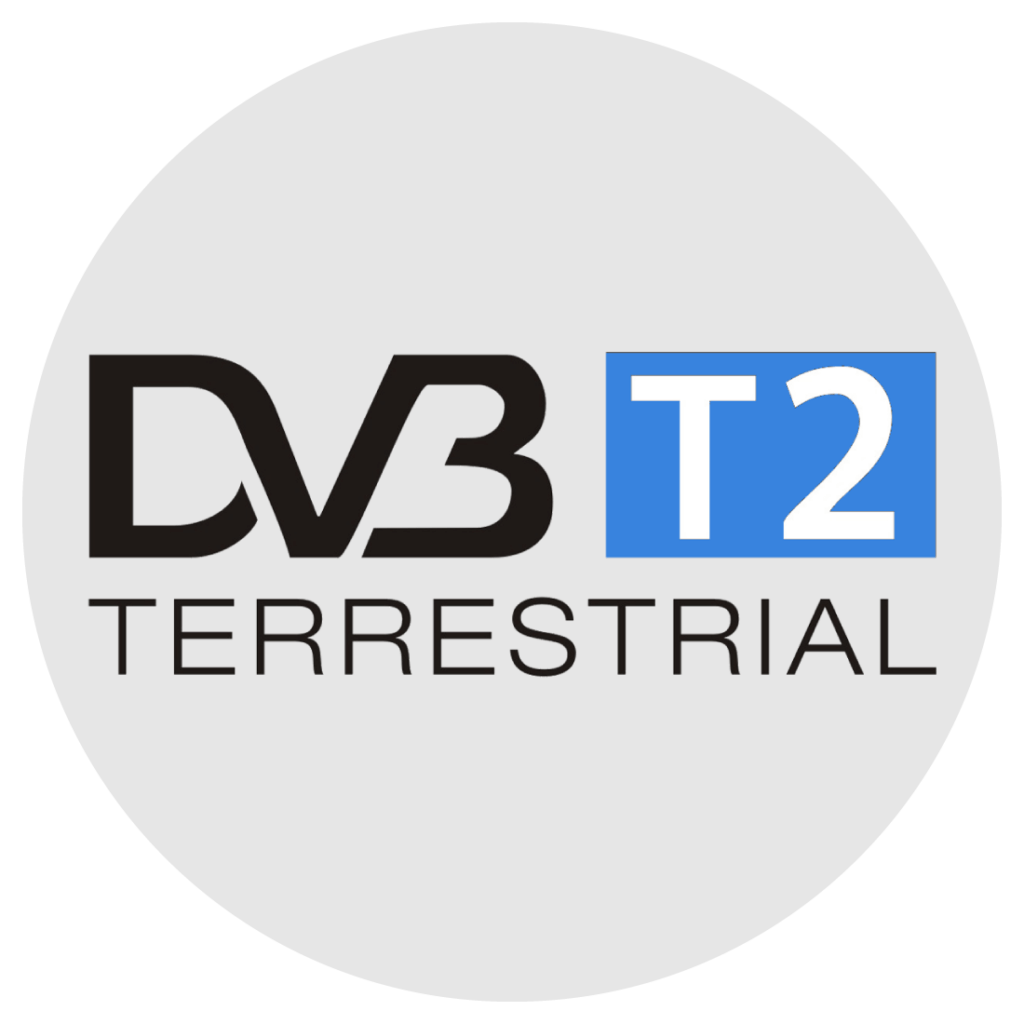
The abbreviation stands for “Digital Video Broadcasting – Terrestrial”, which means “Digital Video Transmission – Antenna Television”. With this form of transmission, digital radio and television signals are transmitted via earth-bound paths with antennas. DVB-T2 is the successor standard, which allows the transmission of a larger number of programmes in better quality than the predecessor standard.
DVB-C
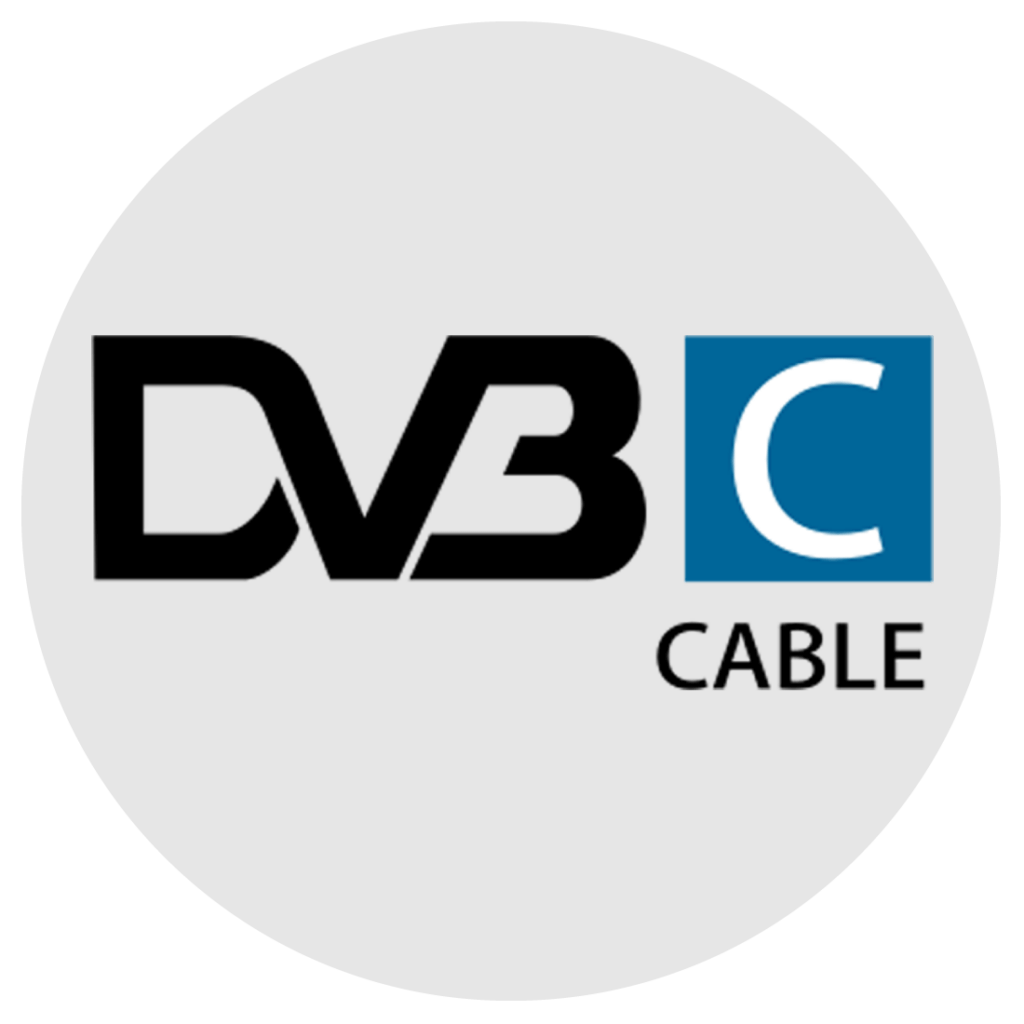
The abbreviation stands for “Digital Video Broadcasting – Cable”, which means “digital cable television” in German. With this standard, the digital radio and television signals are sent and received via a cable connection. There is also a successor standard for DVB-C, DVB-C2, which, however, is not yet used in practice, as DVB-C is already capable of transmitting content in HD.
DVB-S
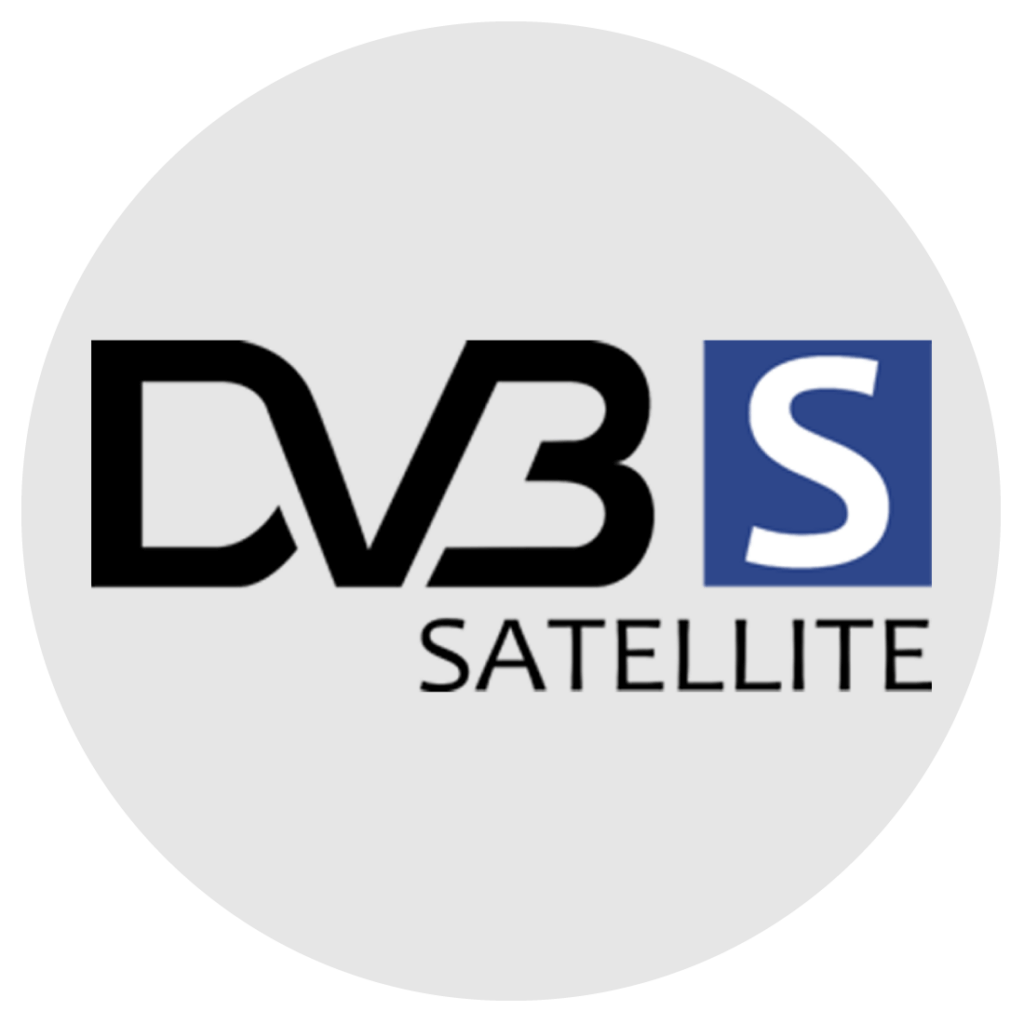
The abbreviation stands for “Digital Video Broadcasting – Satellite”, which means “Digital Satellite Television” in German. With this standard, the digital radio and television signals are broadcast via a broadcasting satellite. In the meantime, the successor standard DVB-S2 is used. Satellite transmission is the most widely used DVB transmission variant because its data transmission rate is very high and it does not require any infrastructure such as cable networks.
The tuners are responsible for receiving the signals via the various transmission methods and converting them into a visible, high-resolution picture. Depending on the number of different and simultaneously receivable transmission variants, different tuner technologies can be distinguished.
TWIN-TUNER
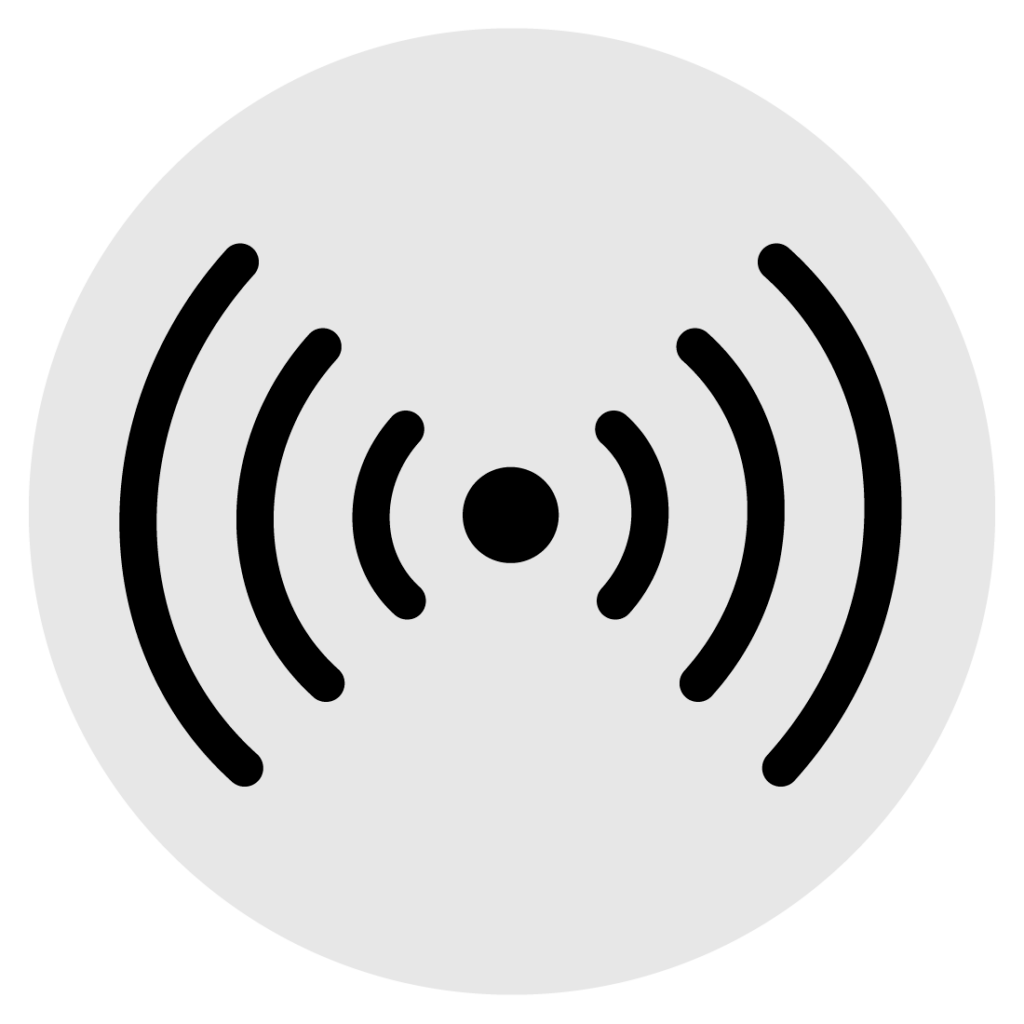
A twin tuner makes it possible to watch one channel via DVB-C and simultaneously record another programme via the same signal range, i.e. DVB-C as well. It is not to be confused with a dual tuner. The term twin tuner dates back to the time of analogue reception technology.
DUAL-TUNER
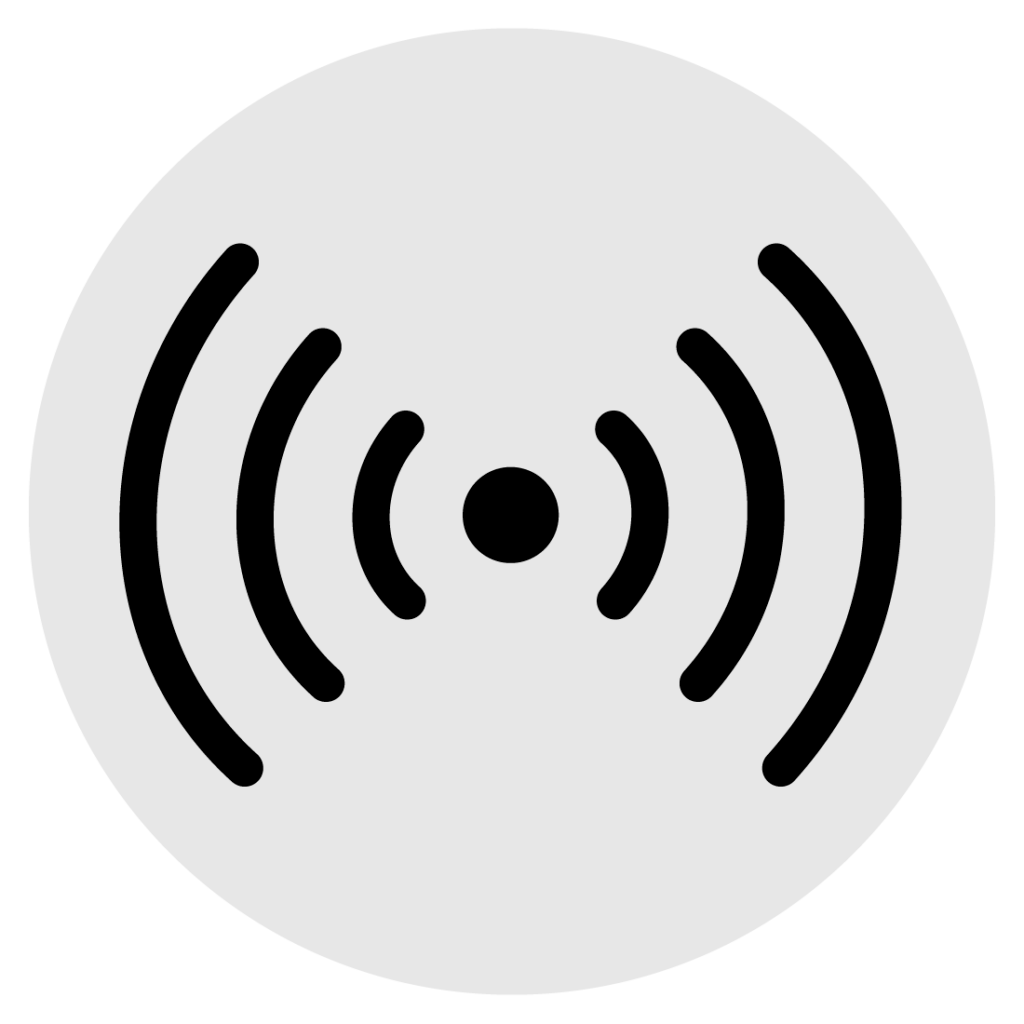
In contrast to the twin tuner, the dual tuner makes it possible not only to receive one signal range, but to use two signal ranges at the same time, such as DVB-C and DVB-S, i.e. digital cable television and digital satellite television. A dual tuner with a twin concept, also called a twin-dual tuner, thus allows the reception and simultaneous recording of digital cable television and digital satellite television.
TRIPLE-TUNER
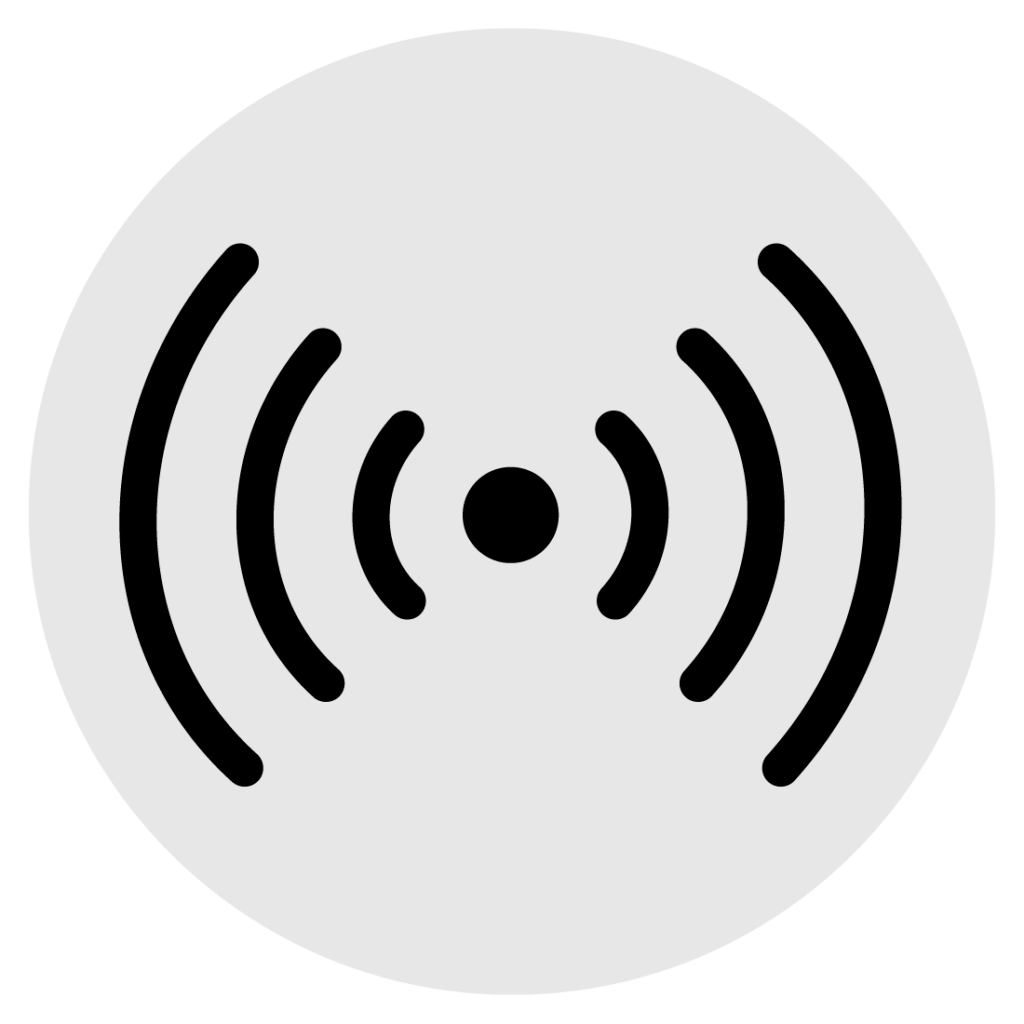
The majority of Smart TVs are currently equipped with triple tuners, which allow three different signal ranges, namely DVB-T, DVB-C and DVB-S, to be received simultaneously. Thus, almost all reception options are covered with a triple tuner. A twin-triple tuner allows reception and simultaneous recording of digital satellite, cable and antenna television.
QUATTRO-TUNER
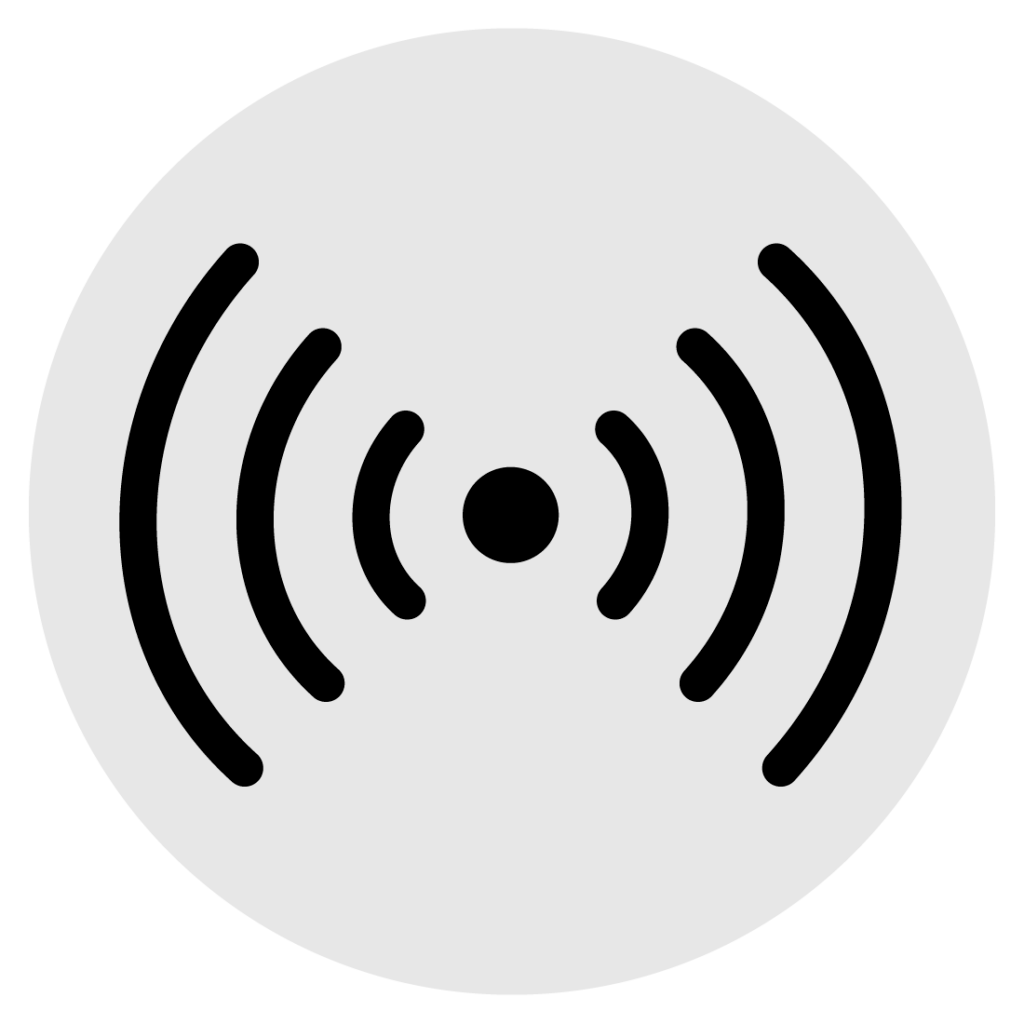
The Quattro tuner adds another reception option to the Triple Tuner concept. The state-of-the-art tuners not only support digital satellite, cable and antenna TV, but are also able to receive and process signals via IP-TV. As a twin-quattro tuner, it is able to receive and simultaneously record these signals via the various forms of transmission.
Which manufacturer uses which operating system?
Since a smart TV is not only a television, but also a device that allows you to navigate between a wide variety of multimedia content, a sensible and user-friendly design of the operating system is crucial to the purchase. However, there is no uniform standard for this. As is so often the case, each manufacturer brews its own soup and relies on its own operating systems.
TIZEN

The top dog on the smart TV market, Samsung, relies on the Tizen operating system. The user accesses apps, programmes and connection options via a clearly arranged bar at the bottom of the screen, the so-called Smart Hub. The order of the elements is determined by the last use and cannot be customised by the user. However, Tizen’s menu navigation and controls are intuitive and clearly laid out. It gets by without any superfluous menu depth and long click paths.
WEBOS 2.0
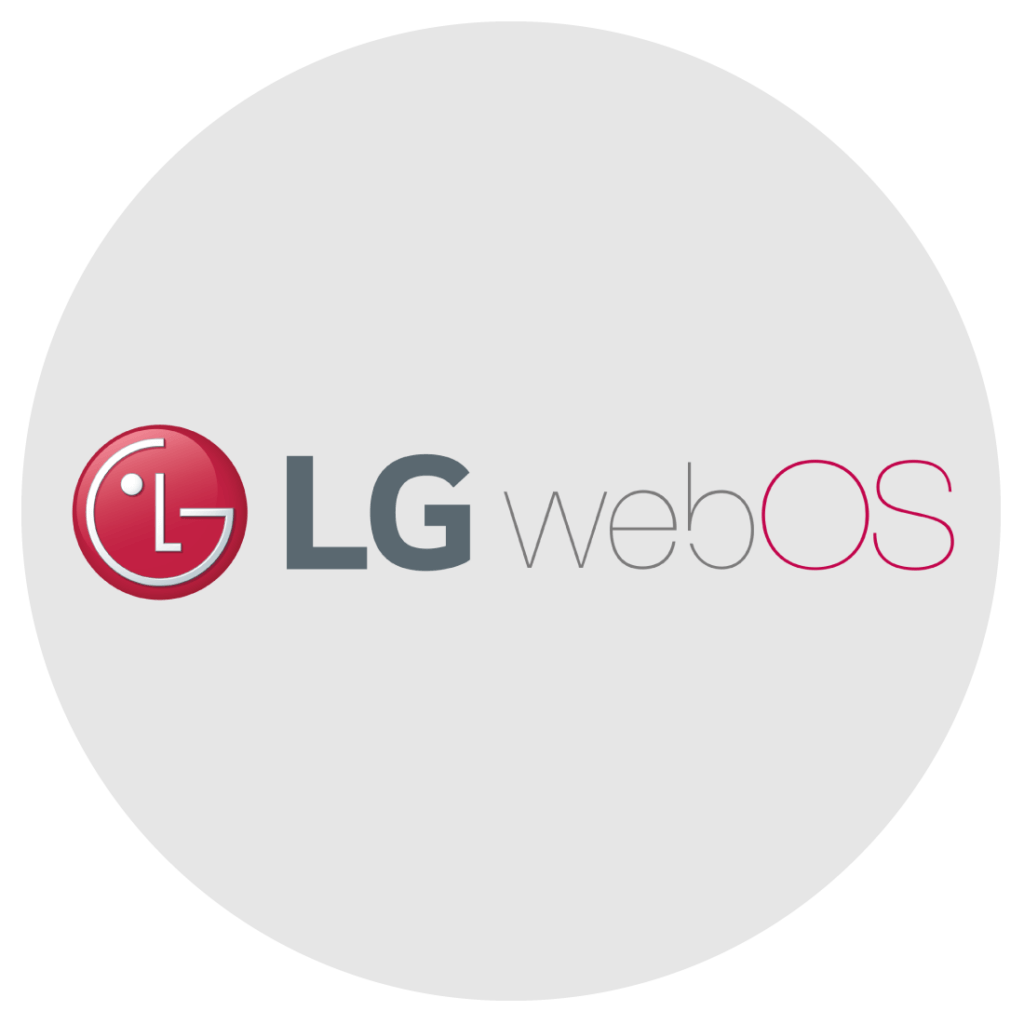
The manufacturer LG uses Web OS 2.0 as the operating system for its smart TVs, which shines above all on short click paths and simple menu navigation. Favourite apps can be grouped individually for DeepL access at the bottom of the screen, very similar to Tizen. WebOS 2.0 is clearly laid out and responds quickly.
ANDROID TV
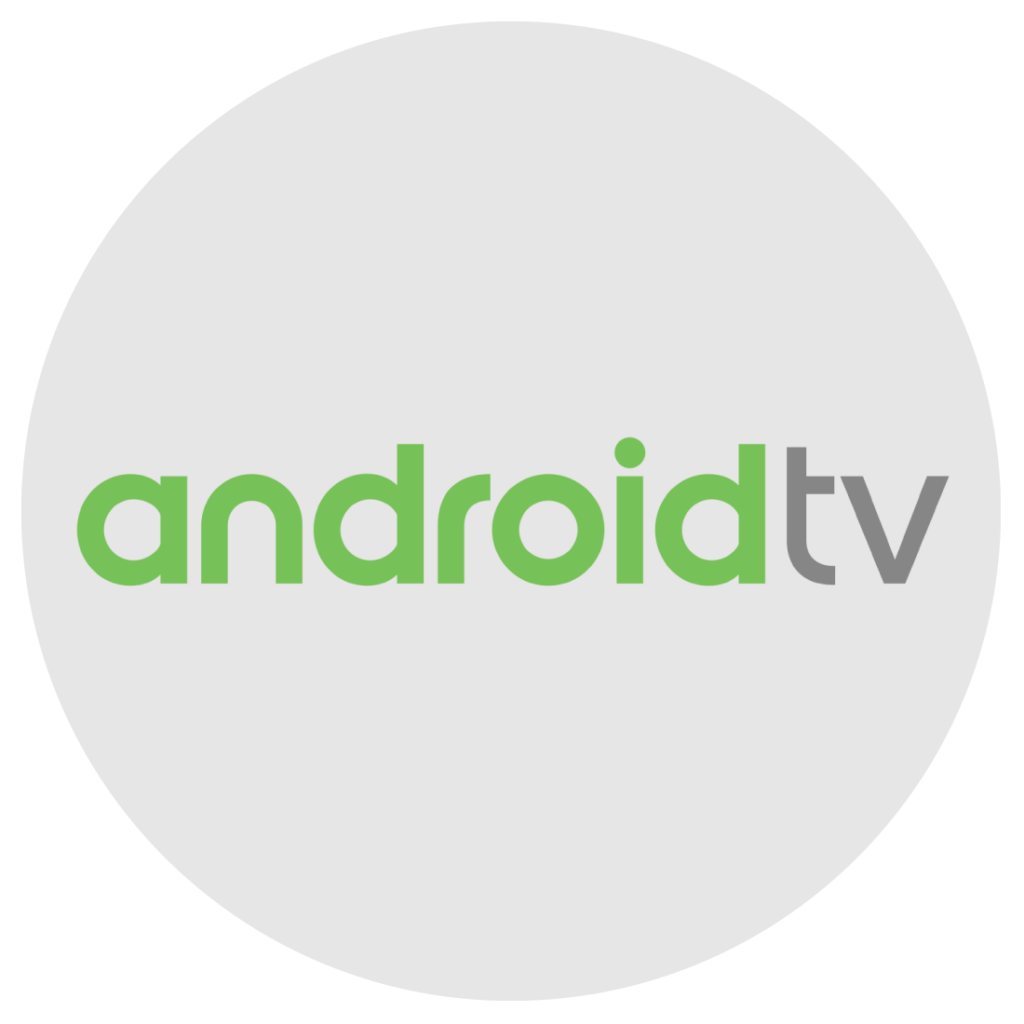
The manufacturer Sony relies on Android TV from Google for its TV sets. The remote controls are equipped with a touchpad for operating Android apps and a microphone for voice control. Via Google Cast Ready, users can transfer films, photos or music from their tablet or smartphone directly to the TV screen. In addition to Sony, Philips is also using Android TV.
FIREFOX OS
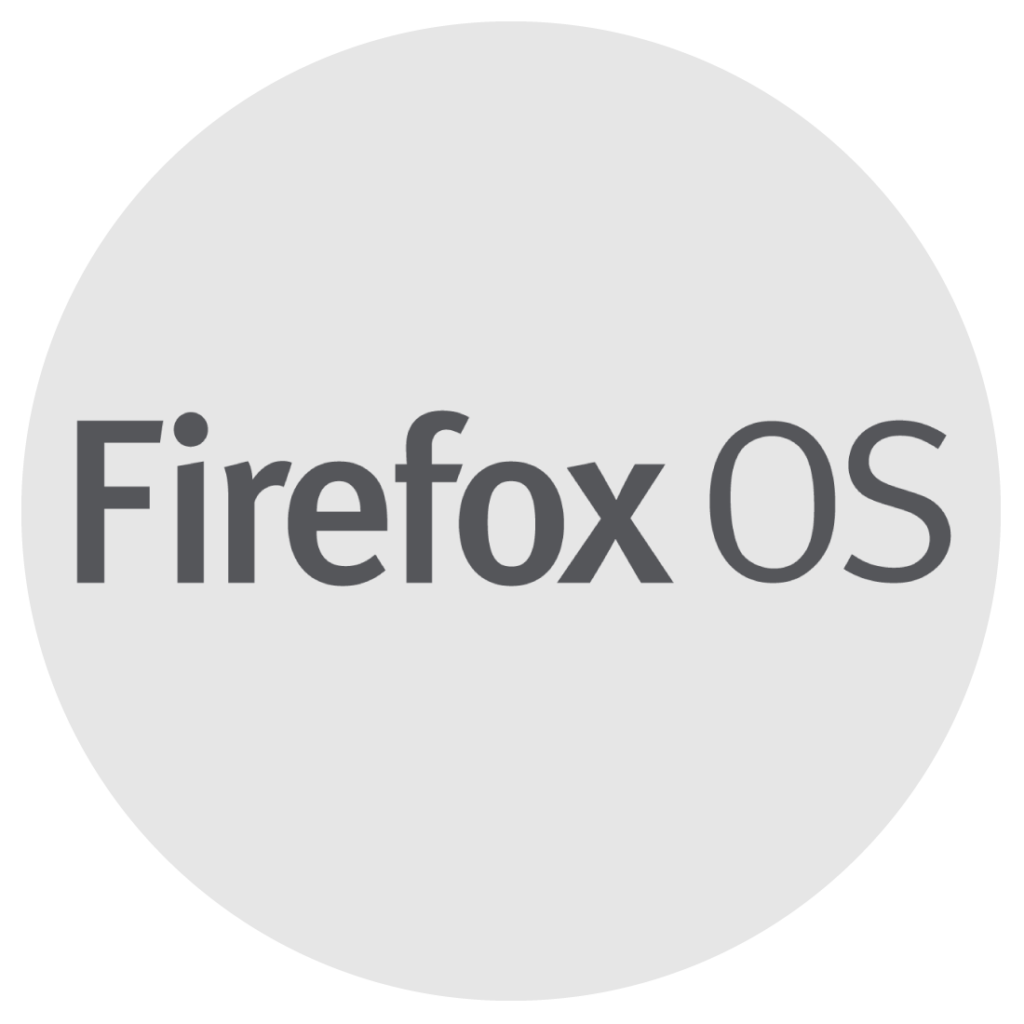
The manufacturer Sony relies on Android TV from Google for its TV sets. The remote controls are equipped with a touchpad for operating Android apps and a microphone for voice control. Via Google Cast Ready, users can transfer films, photos or music from their tablet or smartphone directly to the TV screen. In addition to Sony, Philips is also using Android TV.
Smart application tips
The prerequisites for operating a smart TV in one’s own four walls are very few: apart from the obligatory power connection, a broadband internet connection with powerful data transmission is essential. But if a TV is connected to the internet, can it not also catch viruses and other malware? And isn’t it also possible to upgrade an old set to a smart TV without having to buy a new smart TV at all? What accessories are also useful to make the most of the possibilities of the Smart TV?
Is the Internet fast enough?
Of course, the advantages of an internet-capable TV set can only be used if a sufficiently fast internet connection via LAN or WLAN is available. But what is the minimum speed required for this connection?
For smooth streaming of HD content, a stable and constant internet connection of at least 8 megabytes per second is necessary, unless numerous other devices are being operated in the WLAN at the same time. A LAN connection is more powerful and therefore preferable. For streaming 4K content, however, not even a 16K DSL connection is sufficient. Particularly in some rural regions, prospective buyers should therefore check before buying whether their connection meets the necessary requirements. The playback of music files is less demanding than the smooth playback of HD content via streaming platforms such as Netflix.
Can my Smart TV catch a virus?
The same rules apply to using the internet via a smart TV as to surfing via any other end device. This is because the dangers lurking in the online world are the same. The best way to protect yourself and your smart TV from viruses is to carry out upcoming updates promptly, only install official apps and surf on trustworthy websites. There is no effective virus protection for smart TVs as yet.
Screen: sharp and dynamic
The screen is the central element of every television set. It is the outward appearance that really matters, because without it any technical finesse is worthless – nothing would come across at all: the screen.
Screen diagonal: the bigger the better?
Smart TVs are available with screen diagonals from 24 inches to 85 inches and more. However, bigger does not automatically mean better. The screen size should always be accompanied by an appropriate resolution.
| Inch | Centimetre | Inch | Centimetre |
| 24″ | 60,96 | 58″ | 147,32 |
| 28″ | 71,12 | 60″ | 152,40 |
| 32″ | 81,28 | 64″ | 162,56 |
| 36″ | 91,44 | 68″ | 172,72 |
| 40″ | 101,60 | 70″ | 177,80 |
| 44″ | 111,76 | 74″ | 187,96 |
| 48″ | 121,92 | 78″ | 198,12 |
| 52″ | 132,08 | 82″ | 208,28 |
| 56″ | 142,24 | 85″ | 215,90 |
Where to sit for perfect viewing?
For devices with a large diagonal, it should be noted that a greater distance to the device is also necessary to be able to view the entire screen. In addition to the screen diagonal, however, the resolution of Full HD devices also has an influence on the optimal sitting distance: the higher the screen resolution, the closer to the device the viewer can sit. If you want or need to sit close to the screen of an HD set, you should choose a TV with a smaller screen diagonal but a higher resolution so that you do not see a pixelated picture.
Incidentally, the optimal sitting distance from the TV set for devices with an HD signal is very easily calculated by multiplying the screen diagonal by a factor of 2.5. With a 52-inch screen, the user should accordingly position himself 130 inches or 3.30 metres away from it. In this respect, it is worth measuring the conditions of the living room at home before selecting a device.
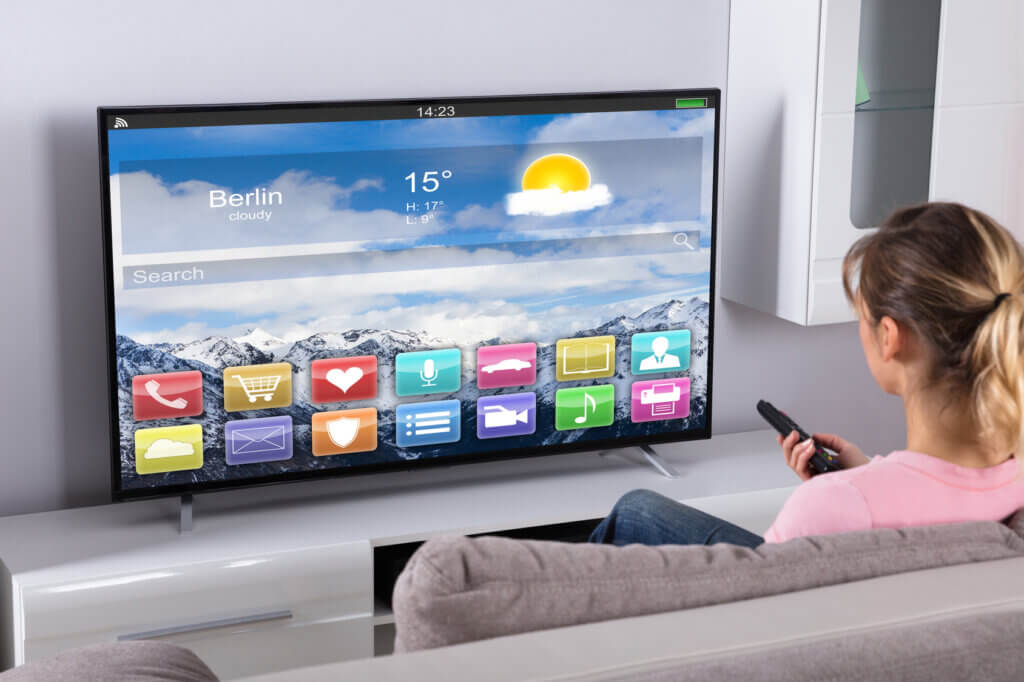
The old rule of thumb does not apply to 4K devices, because even at a short sitting distance they deliver a clear, detailed and non-pixelated picture. However, in order to have the entire screen in view, a certain distance from the device is still recommended. Owners of a 4K TV set determine this distance with the formula 0.75 x screen height.
All clear? – A question of resolution
The resolution of the screen depends on the number of available pixels (image points). The formula is simple: the more pixels, the sharper and clearer the picture and the more pronounced the ability to display even small details. Common terms for different types of resolution are as follows:
- SD: SD stands for Standard Definition and means 720 x 576 pixels. This standard is now obsolete.
- HD Ready: HD stands for High Definition and means 1,280 x 720 pixels. HD Ready devices are generally only found with a small screen diagonal.
- Full HD: The screen has a resolution of 1,920 x 1,080 pixels. This is ideal for HD television and distances of two to four metres from the screen.
Even Full HD is already out of date, the manufacturers suggest, but normal TV programming is currently broadcast in Full HD at most. Higher-resolution standards, 4K, 4K2K and 8K go under the umbrella term Ultra HD (UHD) and have hardly been used in practice so far.
- 4K: The resolution of 4K devices is 3,840 x 2,160 pixels.
- 4K2K: 4,096 x 2,304 pixels characterise devices of this resolution standard.
- 8K: The latest standard denotes a resolution of 7,680 x 4,320 pixels.
Image sharpness has improved steadily and rapidly in recent years and the development is currently continuing with 8K. However, another factor is decisive for colour representation: the dynamic range.
Which resolution makes sense?
For sets with a screen diagonal of less than 50 inches and a sitting distance of more than two metres, a Full HD TV is perfectly adequate. From 50 inches or a short sitting distance, a 4K device is recommended. The gaming consoles Xbox One S, Xbox One X and PlayStation 4 Pro are capable of outputting native 4K image material. So if you want to enjoy the full graphics splendour with your console, you can go ahead and buy a 4K device.
Contrasts and dynamics
Smart TVs use a modern display technology called HDR (High Dynamic Range). HDR is capable of displaying significantly more gradations of colours, contrast and brightness than a standard screen with SDR, i.e. standard dynamic range quality. The display brightness is higher with HDR devices, but at the same time deeper black levels can be displayed.
The HDR standard is coupled with the 4K standard, so that corresponding smart TVs are labelled “4K HDR”. But an ordinary 4K HDR device alone is not enough to be able to watch any content in HDR, because the picture material must contain the HDR information. Although some TV channels are planning to produce compatible programmes, only streaming services such as Netflix or Amazon Video currently offer selected content in HDR. In addition, a trap can lurk with HDR-only screens: some manufacturers describe their devices as HDR-capable, but this only means that the TV can process HDR content. This does not allow a statement as to whether it can also display the content in HDR.
HDR10 is even better than conventional HDR. The number 10 stands for the number of bits. HDR screens have 8 bits and can only reproduce 256 brightness levels, whereas HDR10 screens have 10 bits and the ability to reproduce 1,024 brightness levels. The picture quality of HDR10 screens is visibly better. If you want to buy a device of this standard, you should look for the “Ultra HD Premium” logo. These are TV sets with UHD and HDR10 reproduction.
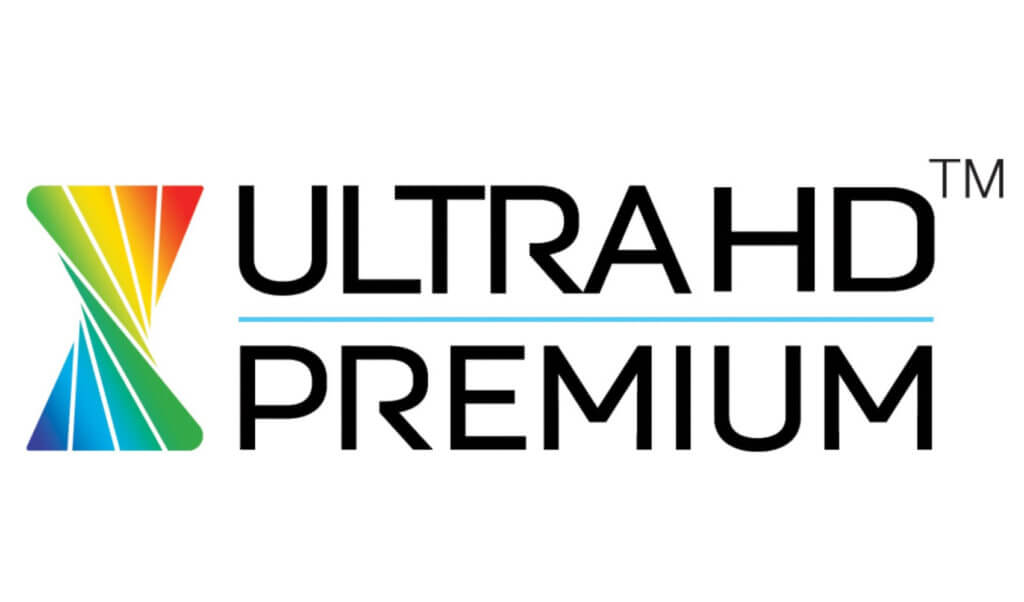
But that’s not all, because with Dolby Vision there is another picture format which, thanks to the possibility of processing 12-bit data, reproduces even better contrasts, more brightness levels and an even wider colour spectrum. Since Dolby Vision data is dynamic, producers can store the optimal values for each individual image. With HDR10, the data is static and the settings remain the same for an entire film. As competition to Dolby Vision, Samsung and Amazon have now developed HDR10+, which, unlike HDR10, is also dynamic.
No flickering, no flickering – refresh rate
The refresh rate quantifies the number of individual images that a TV set displays per second. The more frames a set can display per second, the smoother the picture appears. This value of the frame rate is given in the unit Hertz (Hz) or in English as fps (frames per second).
A television set with a refresh rate of 60 hertz is therefore able to display 60 images per second, which is quite sufficient not only for normal television but also for the playback of Blu-rays. From 24 hertz, the human eye perceives image sequences as fluid movement. However, in the case of fast image changes, for example in action scenes and in the case of fast motion sequences in sports broadcasts, more images per second are good to perceive them as fluid and sharp. A 4K TV can display a maximum of 120 frames per second, a Full HD TV 200.

Some manufacturers give higher values. This is because they include multipliers in their calculations that actually have nothing to do with image sharpness. Since the exact calculation basis is often manufacturer-specific and not transparent, prospective buyers should exercise caution.
Display technologies – from LCD, LED, OLED and QLED
TV screens are currently usually based on two display technologies:
- LED (Light-Emitting Diode) with LCD (Liquid Crystal Display).
- OLED (Organic LED)
LED/LCD
In LCD screens, each pixel consists of a liquid crystal. Fluorescent tubes illuminate the crystals from behind, creating the TV picture. In the LED screen, only LED backlighting replaces the fluorescent tube, while the basic operating principle is identical. The crystals can be aligned individually so that they allow the light to shine through to different degrees, which allows different colours to be reproduced. The backlighting is either at the edge of the screen (Edge-LED) or, in the case of higher-quality LED units, over a wide area behind the display (Direct-LED). The display of contrasts and dark image areas suffers from the constant illumination, the lighting tends to consume more power than an OLED device and the components take up so much space that ultra-thin displays are not possible.
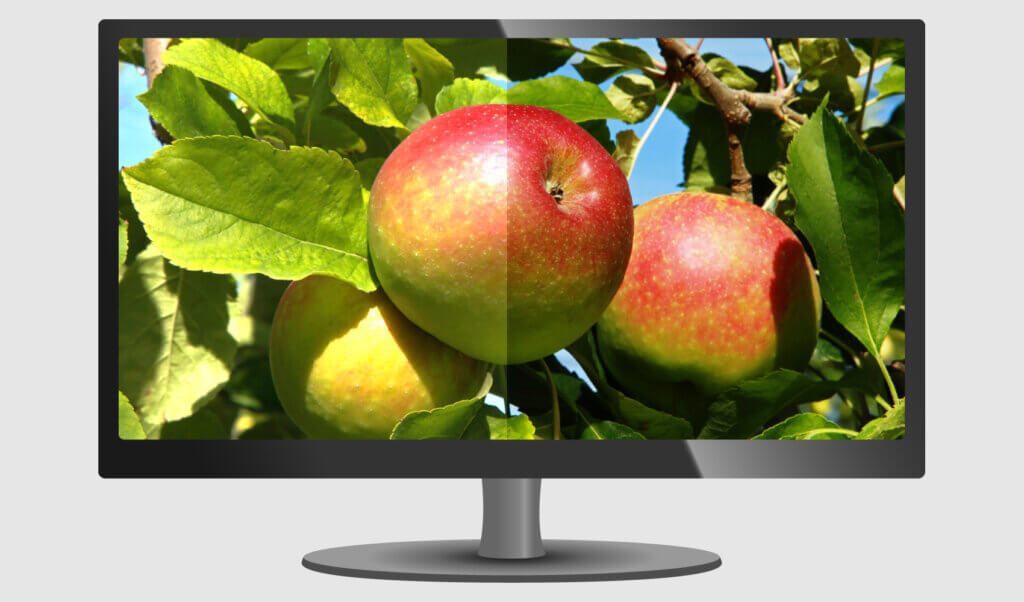
On the other hand, good LED devices have the advantage over OLED models that they shine much brighter. The luminance is specified in the unit “nits”. Top OLED sets achieve a maximum luminance of 800 nits, while good LED sets regularly achieve over 1,000 nits and up to 2,000 nits. However, in order to be able to ideally play back films in the new HDR and Dolby Vision formats, a high brightness is necessary. In bright rooms in particular, an LED rather than an OLED set is therefore recommended.
The advantages of LED technology are offset by only a few disadvantages:
Pro points
- Brighter than OLED
- Better suited for HDR and Dolby Vision formats
- Longer life (about 100,000 hours)
- Cheaper to buy
Drawbacks
- Lower contrast values
- Higher power consumption than LCDs
- No ultra-flat designs possible
- Frontal sitting position in front of the unit recommended
OLED
With the newer OLED technology, each individual pixel illuminates by itself and is individually dimmable. Thus, the OLED displays bright and dark image areas close together, which enables the reproduction of optimal image contrasts. Accordingly, the OLED screen offers some advantages, but also disadvantages.
Pro points
- High contrast values
- Impressive picture in dark rooms
- Perfectly sharp edges possible
- Power-saving
- Very flat design possible
- Wide viewing angle
Drawbacks
- Not suitable for bright rooms
- Less suitable for HDR and Dolby Vision content
- Lower lifespan (about 30,000 hours)
- More expensive to buy than LCD
- Risk of burning in standing images
Due to the numerous disadvantages of OLED technology, the market-leading manufacturer Samsung withdrew from this segment and is instead investing in its own QLED technology (quantum dot LED).
OLED devices are offered by the following manufacturers:
- Sony
- LG
- Metz
- Philips
- Panasonic
What about durability?
Over the years, sets of both variants suffer a loss of luminosity. With OLED TVs, the brightness of the TV is halved after about 30,000 hours, which corresponds to about 3.4 years of continuous operation. LED TVs, on the other hand, show a loss of luminosity only after 50,000 to 70,000 hours of operation, which corresponds to 5.7 to 8 years of continuous operation.
QLED
QLED, also called nanocrystal display, is an alternative technology of the manufacturer Samsung to OLED technology. Thanks to the nanocrystals, which emit particularly pure colour sequences, the images are supposed to appear brilliant and luminous, and the colour depth and colour spectrum are unparalleled. The colour space is currently the largest among all screen technologies, and the power consumption is lower than with LED or OLED screens. Compared to other devices, TVs with this technology are more cost-intensive. As with the HDR standard, there is still a lack of corresponding content.
Trim to Smart: Is that possible?
Not only is it possible in principle to upgrade a TV set to a smart TV, there is such a confusing abundance of different, but also costly options for doing so that the simplest option is ultimately to buy a new smart TV.
The actual advantage of a Smart TV, namely to combine all the functions of multimedia entertainment in a single device, is not offered by any of the various retrofit options. This is because in each case the purchase of a second device or a separate element is necessary. The central advantages and functions of a smart TV are also not offered by supposedly cheaper alternatives:
- No native app support
- Picture quality not up to the latest standard of modern LCD or OLED TVs
Technology to put on top: The set-top box
A set-top box is a separate unit that is usually placed on top of or underneath the television set. It can take on the role of a receiver for the reception of digital satellite signals and convert the satellite signals into a format that can be understood by the television. A television is therefore able to receive digital television if a corresponding set-top box is connected to it via a Scart cable. If the set-top box has a CI+ interface, the user receives the HDTV programme in addition to the range of digital television channels.
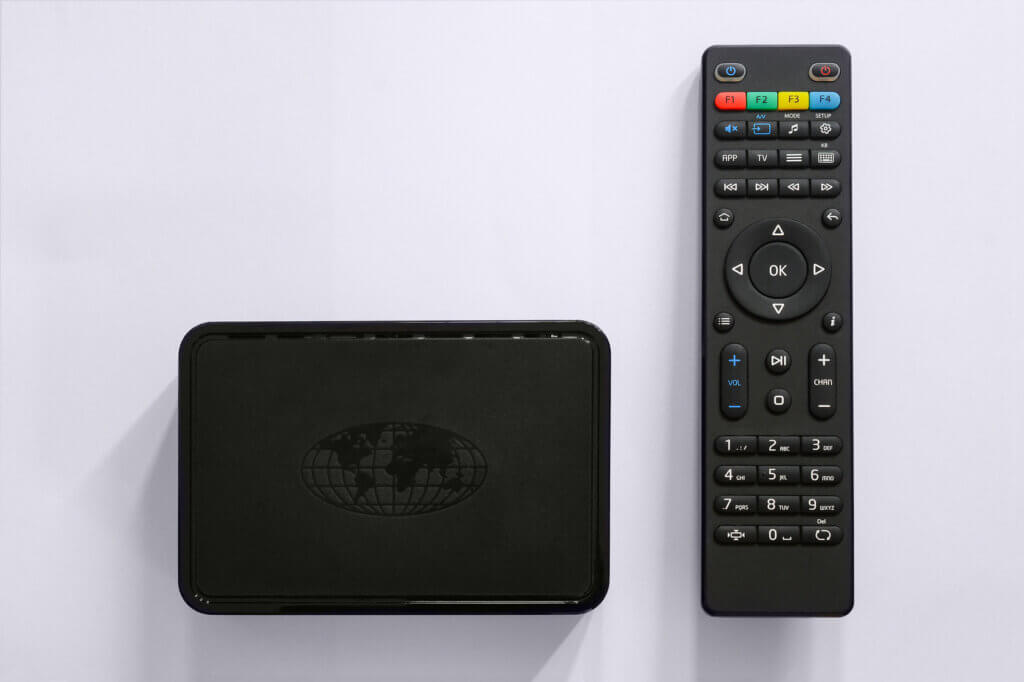
However, newer set-top boxes can do much more: IP-capable set-top boxes (IPTV-STBs) act as an interface between the TV set and the Internet. They are therefore also called IPTV receivers and enable:
- the reception of IPTV, i.e. television via the Internet
- the retrieval of electronic programme information
- record content, provided the box is equipped with a hard drive
- reception of HDTV
- the retrieval of content on demand from streaming service providers
- time-shift television via the Timeshift function (hard disk required).
For a high-quality set-top box, users should first estimate the purchase price of about 100 euros for STBs without a hard disk or about 350 to 650 euros for STBs with a hard disk. But in addition, the increased power consumption for another separate device should not be neglected.
Well-known IPTV offers are:
- MagentaTV from Deutsche Telekom
- IPTV from 1&1
- Vodafone IPTV
However, anyone who accepts these offers should bear in mind that they are making themselves dependent on one provider, not only for the reception of IPTV, but also for Internet and telephone reception at the same time. This is because IPTV and broadband providers usually have to be identical. Therefore, interested parties should find out in advance whether the current Internet provider can even offer a broadband connection and IPTV for their own place of residence.
Streaming sticks
Streaming sticks are a comparatively inexpensive retrofit option for quickly connecting the TV set to the Internet. In addition to the well-known products with voice control Amazon Fire TV Stick and Google Chromecast, Intel or Microsoft also offer streaming sticks.
If you buy a streaming stick and insert it into the HDMI port of your TV set, you connect it to your WLAN network. Streaming services such as Amazon Prime, Netflix, Maxdome or Sky are thus accessible via the TV set. However, each stick is limited in the selection of available services. No stick offers full and unlimited access to all services. Often an additional subscription, for example an Amazon Prime subscription for the Fire TV Stick, is necessary to be able to use the functions at all. The choice of the right stick therefore needs to be carefully considered in advance.
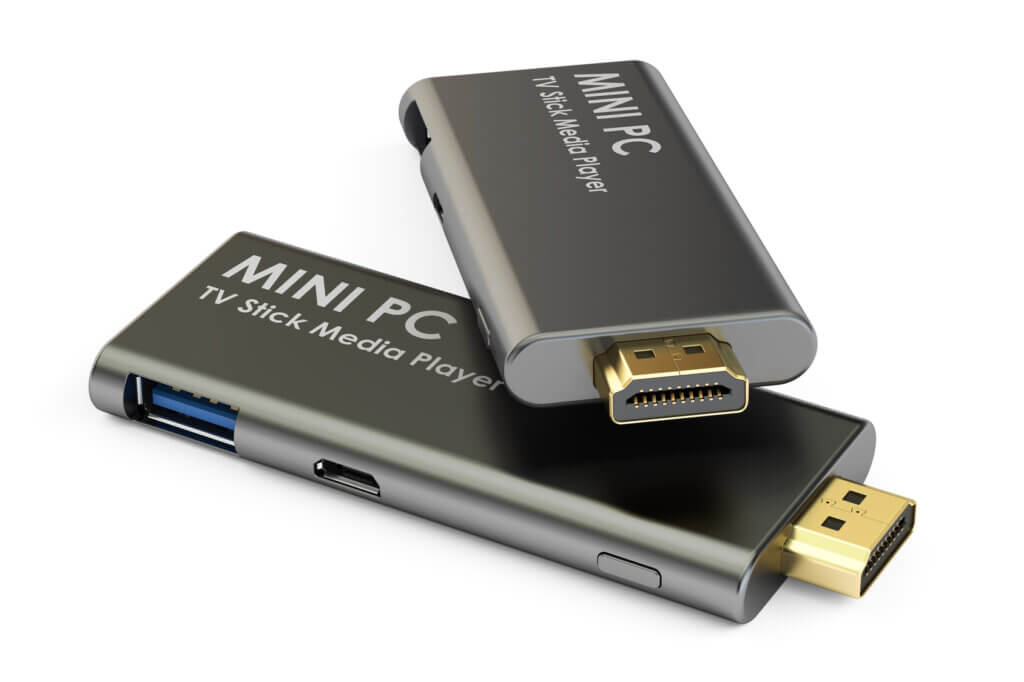
The independently functioning streaming sticks should not be confused with the so-called dongles. Dongles merely mirror the content being played back via a tablet or smartphone and project the content onto a TV set via so-called screen mirroring. Without a primary playback source, they are therefore useless. Nevertheless, many streaming sticks also require the use of a smartphone or a separate remote control to control and use important functions.
Which accessories are worthwhile?
The decision for a new Smart TV has been made, it has already taken its place in the living room and its brilliant picture shines razor-sharp. What is still missing for complete multimedia enjoyment is sound that matches the impressive picture and, of course, exciting content that can shine on the new TV. We show you which purchases are worth considering in order to further improve your viewing experience with a Smart TV.
Perfect sound for a perfect picture
The loudspeaker systems built into Smart TVs are generally convincing with their good quality. However, this will not be enough for real film enthusiasts who want to create an authentic cinema feeling within their own four walls. An external sound system for perfect surround sound is needed!
Home theatre sound systems usually consist of five, seven, nine or eleven speakers and a subwoofer. The large number of speakers, ideally placed around and above the seating area, creates a 360-degree surround sound experience. In the case of an 11.2 sound system, we speak of true 3D sound. However, home cinema fans must bear in mind that they usually have to wire the speakers together. If you want to avoid tangled cables, you can now confidently use wireless speaker systems.
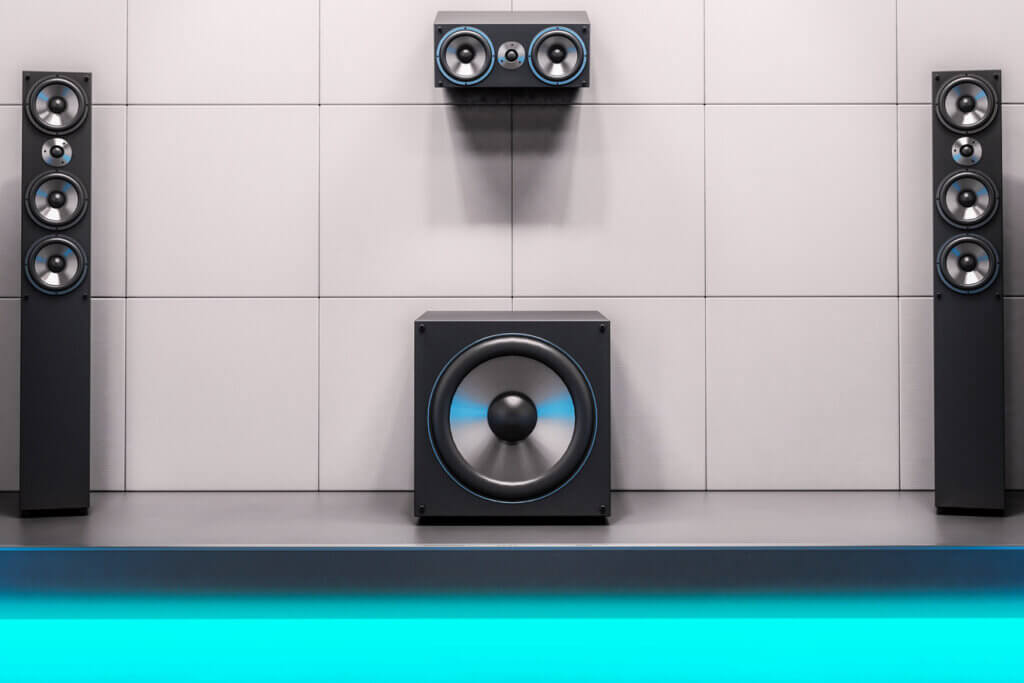
If you have less space and do not have the option of placing several speakers in different parts of the room, you should alternatively opt for a 2.1 sound system consisting of a soundbase/subwoofer and soundbar, or for a simple soundbar, which produces a differentiated yet rich sound image with a spatial impression, even though the speakers are all grouped together in a compact bar under the TV screen to save space.
Mathematics for sound fans
In connection with TV speaker systems, one inevitably encounters the number combinations 2.1, 5.1 or 7.1. Their meaning is simple: the first number stands for the number of speakers, the second for the number of subwoofers that make up the overall system. A 5.1 system therefore consists of five speakers and a subwoofer. A soundbar plus subwoofer usually runs as a 2.1 system.
High-resolution content
For high-definition content and razor-sharp film enjoyment, the DVD has long been obsolete. The Blu-Ray disc is the official high-definition successor to the DVD. Only Blu-Ray technology has the storage capacity to accommodate such extensive information. In order to watch the contents of Blu-Ray discs with the Smart TV, a separate Blu-Ray player is required. Since these are backwards compatible, the user can also play DVDs with it.
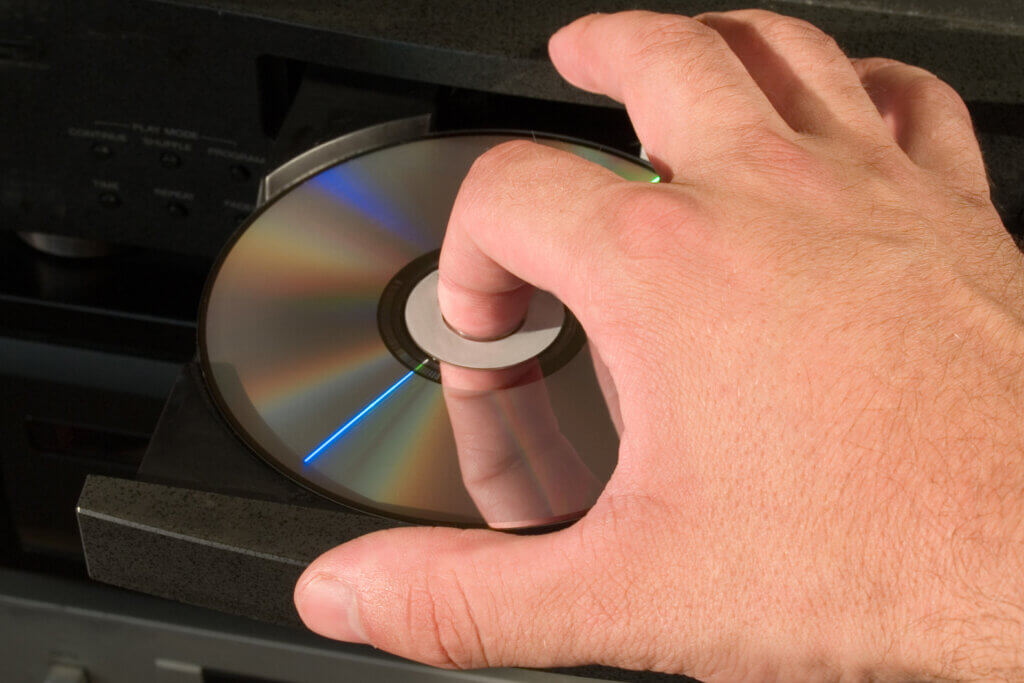
Those who like to play video games on the console can sometimes save themselves the purchase of a separate Blu-Ray player. The PlayStation 3 and its successor, the PlayStation 4, have Blu-Ray drives and are capable of playing the content. The Xbox One is also capable of this, and the Xbox One S and Xbox One X even offer an Ultra HD Blu-Ray drive. The user connects each of the game consoles to the Smart TV via an HDMI cable, just like a pure Blu-Ray player.
Exclusive programmes
If you are a customer of the pay-TV broadcaster Sky, you will not be able to play its content on the Smart TV without further ado. On request, the provider will send a module for this purpose, which the Smart TV owner can insert into the CI+ slot on his or her device. This means that nothing stands in the way of enjoying pay-TV films or exclusive sporting events.

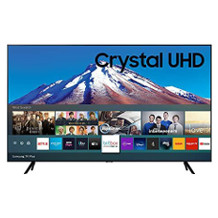
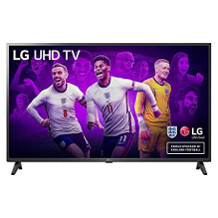
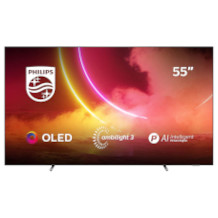
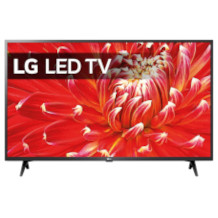
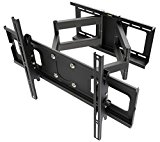
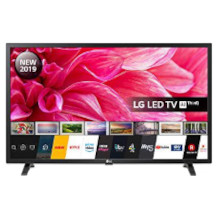










 4,241 reviews
4,241 reviews
